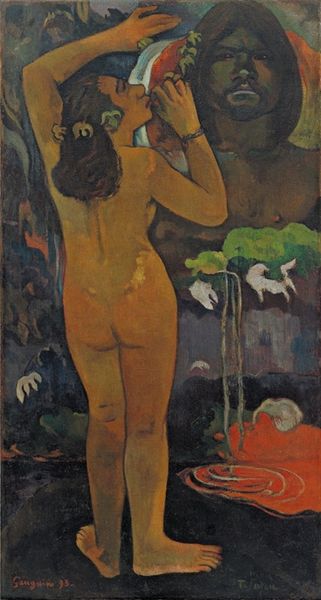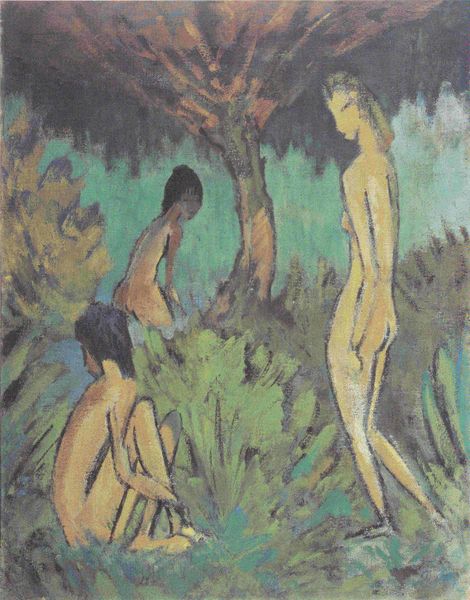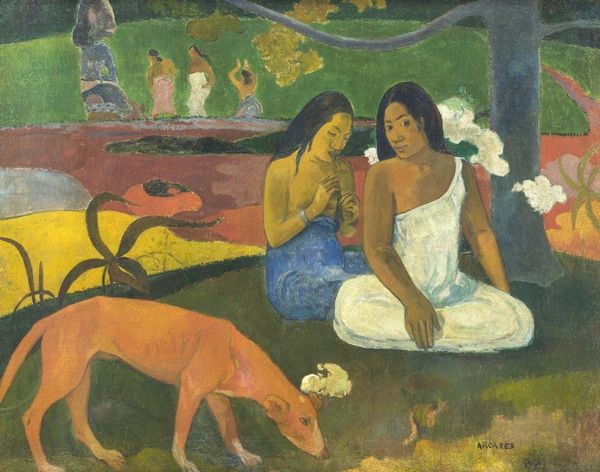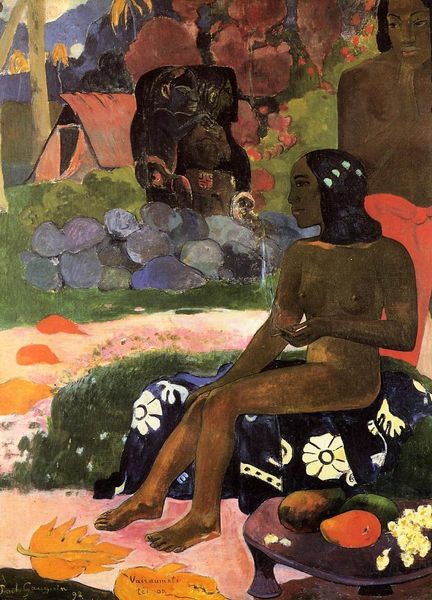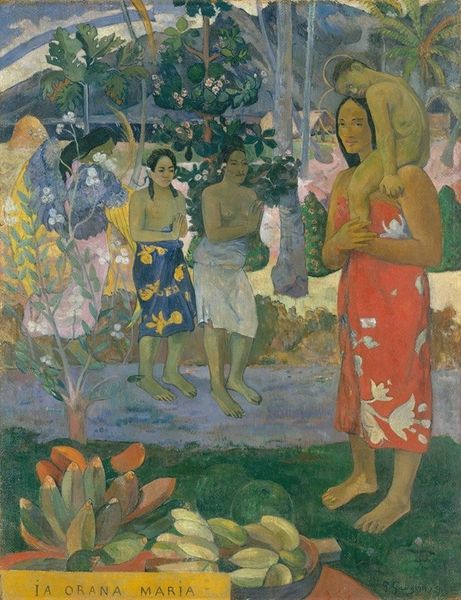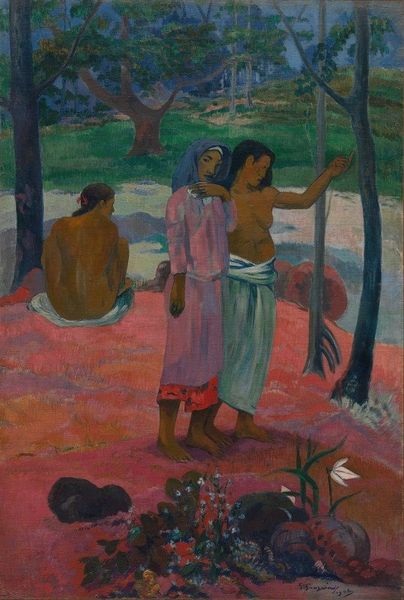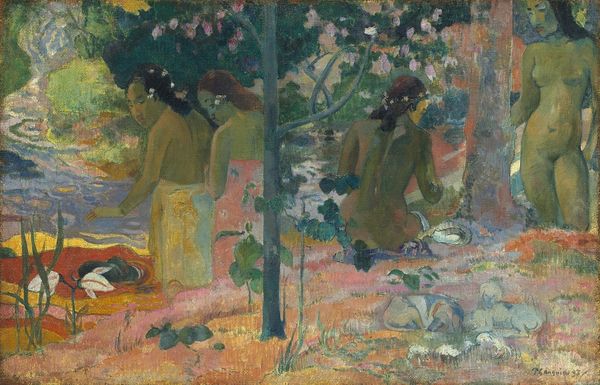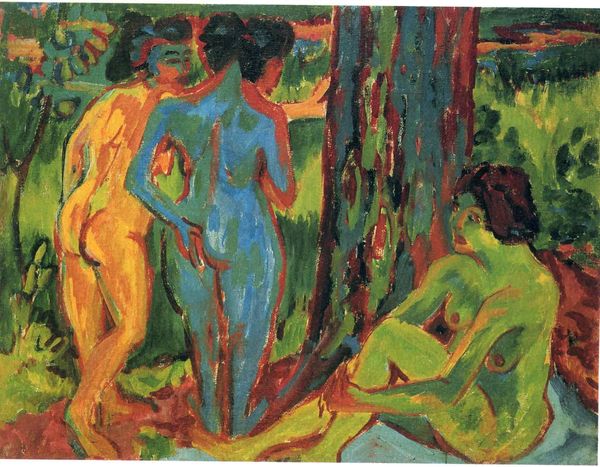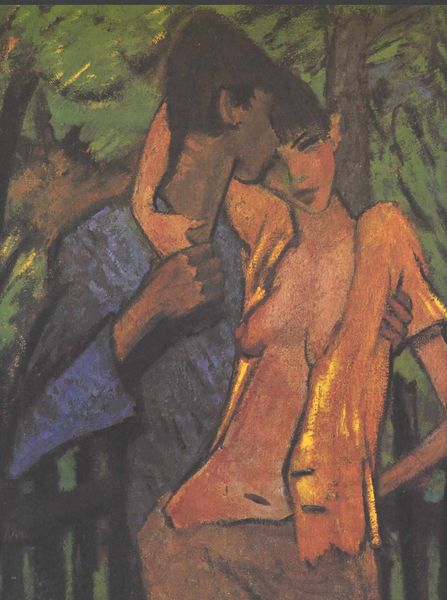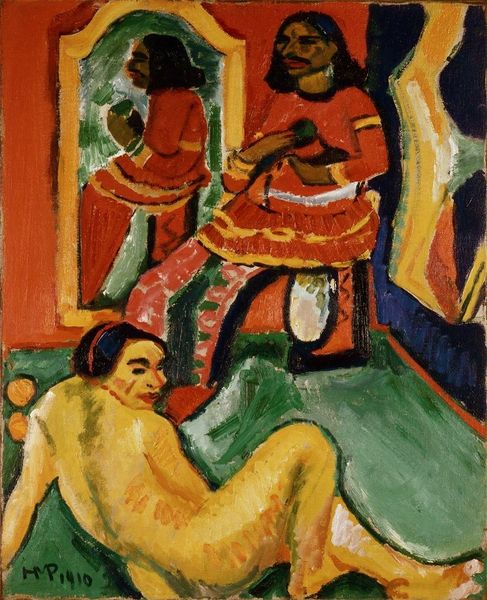
painting, oil-paint
#
figurative
#
narrative-art
#
painting
#
oil-paint
#
landscape
#
figuration
#
orientalism
#
symbolism
#
post-impressionism
#
nude
Copyright: Public Domain: Artvee
Editor: Here we have Paul Gauguin's "Parau na te Varua ino" painted in 1892. The colours feel quite unnatural, almost dreamlike. And there's a real sense of unease about the two figures depicted. How do you interpret this work? Curator: Well, the title itself, "Words of the Devil," sets a tone, doesn’t it? Gauguin was deeply interested in the power of symbols, especially in Tahitian culture. Consider the woman – her gesture is one of contemplation, maybe even worry, but also a hint of covering. What might that imply in the Western art historical trope of Eve? Editor: So you see echoes of the biblical story there? The devil's influence and original sin? Curator: Precisely. The Tahitian figure, though, brings another layer, perhaps connecting indigenous beliefs about spirits with the Western idea of temptation. That kneeling figure is also intriguing... almost like a visual embodiment of a suppressed thought. What do you make of its unusual frontality and stiff posture? Editor: It’s definitely unsettling. I guess that reinforces the idea of internal conflict and fear. Do you think Gauguin was trying to contrast Tahitian innocence with European corruption, or was he just imposing his own ideas onto the culture? Curator: That's a crucial question to consider with any art of cultural exchange. It’s never a one-way street, and what Gauguin filters through his brush says as much about him as about Tahiti. Perhaps this is a dance between both the colonialist and colonized gazes and souls? Editor: That makes the painting far more complex, I see how loaded each symbol might be, adding to the overall impression of spiritual struggle. Curator: Indeed. It speaks to enduring human anxieties about good and evil, temptation, and the search for authenticity – anxieties that continue to resonate across cultures.
Comments
No comments
Be the first to comment and join the conversation on the ultimate creative platform.
